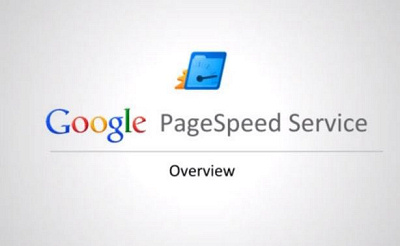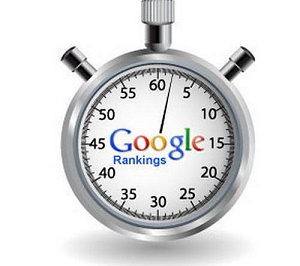Google PageSpeed: Improving Website Performance
Google PageSpeed helps you to optmize your web design in order to improve both your users experience and your sites SEO ability due to faster page loading times. It’€™s a solution and set of tools that analyze the way websites run, enhancing operation and loading times significantly.

The Internet has become a day to day survival tool. Whether it’€™s for business or personal usage, people around the world are using the web to get a message across or to promote a product or service. It has become a vital component in marketing. Fast, optimized web pages are essential to getting high visitor engagement, conversion and retention. PageSpeed solutions can identify practices that should be applied to any site and aid in automating the process.
What Does PageSpeed Do?
Google PageSpeed captures content on servers and rewrites them. It does this by applying the best practices in web performance and provides that to end users through Google’€™s servers. Google doesn’€™t need specific information, administrative access or confidential data to effectively analyze a website. Instead, site traffic is directed through Google servers, allowing the analytical process and improvement to take place.
PageSpeed tools like Insights are an excellent way to examine websites and receive recommendations for manual improvement. It caches portions of HTML, grabbing non-cacheable components from original servers as needed. This takes place while other parts render to the user’€™s browser. PageSpeed prioritizes content above the fold of the browser.
Google PageSpeed Insights
Insights measures web page performance on both desktop and mobile devices, looking for ways to increase page speed loading time. Utilizing agents for each device, PageSpeed Insights scores individual web pages on a series of criteria. Insights will provide ideas for increasing the score and page optimization. Regardless of how high or low the score, if there’€™s room for greater performance, Insights will offer suggestions on what enhancement steps can be taken.
When assessing the speed of any web page, PageSpeed considers that the network connection always has an impact and differs from user to user. PageSpeed only factors in independent criteria in regard to page performance, including:
- Configuration of the server
- A page’€™s HTML structure
- Use of external resources
- Images
- JavaScript
- CSS
While the performance of any web page will ultimately depend on the individual user’€™s network connection, Google PageSpeed offers solutions for improving the overall relative performance of web pages. The platform bases its suggestions on:
- Elapsed time between a user’€™s page request and the moment the browser renders the above the fold content.
- Elapsed time between a user’€™s request for a new page through the moment the page is rendered fully by the browser.
Once Insights has assessed the performance, its offered suggestions are graded on a priority basis. Red exclamation points indicate important fixes for optimizing page performance. A yellow exclamation point is a low priority suggestion, a fix that can be implemented if so desired. Green check marks means no major issues were found and no action needs to be taken.
PageSpeed Insights Mobile Analysis
While some might argue that the difference between a three second and one second load time isn’€™t significant, they would be mistaken. A faster load time indicates efficiency and professionalism and a user always takes note. Research shows even the slightest delay can interrupt the user’€™s train of thought. Google PageSpeed looks to hold user engagement, delivering pages rapidly, regardless of type of network and device.
What Insights does is allow users to interact with any given page sooner by delivering and rendering any above the fold content in under a second. This way, the user is already viewing content as the rest of the page is delivered in the background.
Engineering a one second above the fold page load is a unique challenge. It’€™s not only a matter of different browsers and devices, there’€™s also a variety of networks in play like 2G, 3G and 4G. 4G deployments is easily becoming the dominant network connection for mobile devices, but there is still plenty of market for the slower ones.
With that in mind, PageSpeed takes into account the communication sequence between servers and browsers. It looks to budget the milliseconds that occur between user requests and page loads. It gauges render response time, execution of client-side application and browser layout with content rendering.
Server response time is that time the initial HTML’€™s return takes. Redirects can add unnecessary hundreds of milliseconds to a page request, especially on a slower network. PageSpeed encourages minimizing redirects or eliminating them completely.
Another consideration is round trips to the first render. For the sake of speed, these should also be minimized. Often, a new TCP connection may not use full available bandwidth between server and client right away. This can result in the server sending almost 10 TCP packets for a new connection in the first trip. Now it will wait until the client acknowledges this action before delivering additional data. Fewer round trips can significantly decrease the render delay.
Optimizing content to minimize round trips is critical to the delivery of necessary data for that first render of the web page. Any content under 14kb can get a page painted after a single trip. Also, before browsers render pages, it has to parse that web page. Unfortunately, each time that happens, there is another network round trip which delays the page render time. PageSpeed can offer potential solutions to bypass these issues and get the average page loading time down to a single second.

Using PageSpeed Insights
For now the service is invite only. Fill out a form and request access. Once your registration has been approved, log in and agree to the Terms of Service.
On the Google Developers website, go to the main PageSpeed tools. From here, click on the Analyze Your Site Online option. Now, this does not mean the site in question has to be yours. PageSpeed will analyze any website that allows it. This means a site that is publicly accessible.
Enter a URL and select Analyze. The platform then provides a ‘€œdesktop’€ and ‘€œmobile’€ analysis of the site’€™s web pages. It will provide a score between one and 100 for speed and performance. This number doesn’€™t reflect actual load time. It indicates how the page could go faster.
One doesn’€™t need to be an ace webmaster or developer to work with PageSpeed’€™s results. The results suggest changes for site optimization ranked by scales of High, Medium and Low. There will be links like Learn More for gathering helpful information. There is also an option called Already Done! that shows what has been accomplished to improve performance.
Google PageSpeed attempts to keep its suggestions as simple as possible. It might suggest Leverage Browser Caching or Combine Image into CSS Sprites. If one isn’€™t clear about the procedures, the link will definitely help.
What’€™s best about the process is nothing is required of you. If one is comfortable with the way their website is running, any PageSpeed suggestions can be taken with a grain of salt. On the other hand, only suggestions with the red exclamation points need serious consideration if one is interested in improving web performance. Yet, even then, ignoring the suggestion won’€™t impact any part of the site’€™s current performance.
Google strongly suggest any changes be thoroughly tested in development before final application. One should also familiarize themselves with terminology by reviewing the Google PageSpeed Insights guidelines.
Conclusions
Site optimization is critical to maintaining one’€™s presence on the Internet. The tools provided by Google PageSpeed analyze and offer suggestions for optimal performance. Currently, PageSpeed is a free trial. One can test its potential on your own website or any other public website, getting a strong idea of how it works. It won’€™t take long to see how Google PageSpeed can effectively and efficiency improve the performance of a website and one’€™s overall Internet presence.
About the Author
James Patterson is Simple iD’s lead online marketing consultant. Simple iD is a full service online marketing agency that offers clients everything that they need to succeed online, from web design and development to a complete tailor-made online marketing package. Come and check us out on Facebook.






